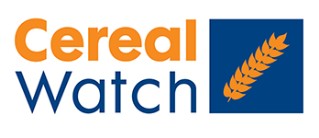Accounting for variation in cereal quality by failing to formulate diets on the actual quality of cereals being used, and taking into account variation, for example, between loads can have significant impacts on performance and feed costs in all classes of livestock according to Trouw Nutrition GB, who provide routine testing of cereals for feed manufacturers and farmers through their innovative CerealWatch service. “To ensure feed formulation is as precise as possible to maximise both animal and economic performance, it is important to monitor grain quality routinely,” comments Monogastric technical support manager Alice Hibbert. “This is particularly important as new crop cereals start to be incorporated into diets.” The Trouw Nutrition GB CerealWatch grain monitoring service evaluates the nutritional value of grain quality. Analysis is carried out in the company’s Derbyshire laboratory and using methodology from the Trouw Nutrition Feed ingredient Research and Development laboratory in the Netherlands, a comprehensive nutritional profile of the grain sample is provided. This includes predictions for energy for pigs, poultry and ruminants, and digestible amino acids for pigs and poultry. “Formulating with an inaccurate nutrient profile of cereals, even by a small margin, can have a significant economic impact for both feed and livestock producers,” Ms Hibbert continues. “For example, if you overestimate energy content then there is a risk that energy may be undersupplied by the diet. Underestimation could result in higher feed costs as more energy may be provided than is required. Therefore, routine analysis is recommended to ensure nutritional values are as current and as accurate as possible.” She says in 2016, new crop cereal energy values (Pig NE, Ruminant ME and Poultry AMEn) varied by 16% in wheat, and 22% in barley on average while Lysine content varied by 60% in wheat and 41% in barley respectively, which was only revealed after analysis of cereals was carried out. In addition to the suite of nutrients reported in the 2016 CerealWatch package, Trouw Nutrition has added mycotoxin analysis for Zearalenone (ZEA), Deoxynivalenol (DON) and T2 and HT-2. CerealWatch 2017 will be providing cumulative average mycotoxin values for new crop wheat and barley giving an early indication of new crop field borne mycotoxin presence. While in excess of 200 mycotoxins are known to exist, the four selected for analysis in the CerealWatch survey provide an indication of field borne toxin production by the Fusarium species of fungi. These toxins are known to have impacts on livestock performance. Risk varies with variety, region, preceding crop, cultivation, and rainfall at the flowering and pre-harvest stages. Analysis for mycotoxins provides a valuable understanding of the extent of contamination, allowing decisions to be made on risk mitigation. In addition to providing a detailed nutrient profile for each sample received, CerealWatch generates a large dataset of cereal quality data allowing further evaluation of regional and national trends in grain quality.
Regular cereal analysis will ensure optimum performance
Share this story:




